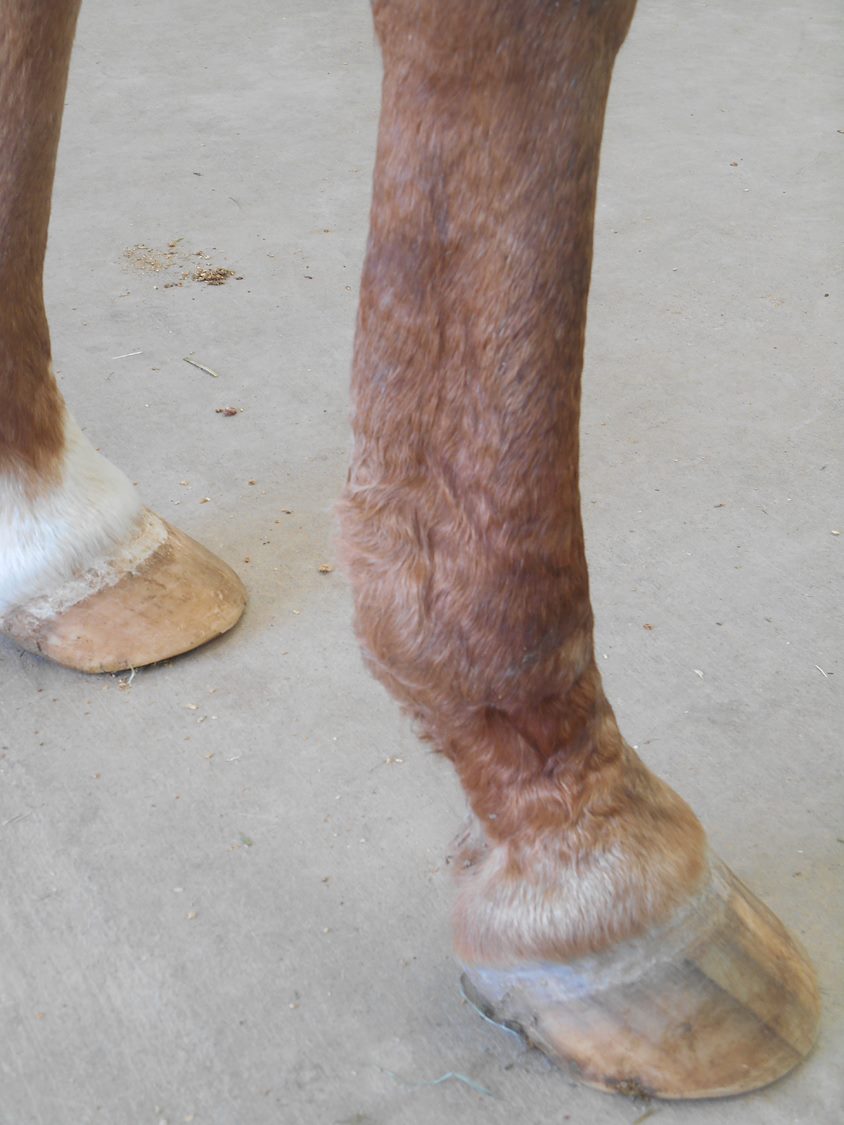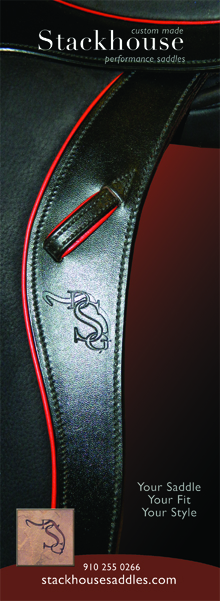Search the Site
Guest Blog post # 59: "Tendon and Ligament Injuries" by Dr. Corine Selders

Owning a sound horse is a blessing that many horse owners have but do not appreciate, until the horse is lame. There are many reasons why a horse may become lame (limp), such as arthritis, wounds, disease, foot problems, sprained /strained tendons &ligaments, and even broken bones. This month’s article on tendon & ligament injuries is going to cover a topic close to my heart, as my own horse has finally recovered from a ligament injury after two years, and is now competing at horse shows with his new owner.
Tendons and ligaments occur throughout the body, but the ones that are injured most commonly in the horse are the flexor tendons and the suspensory ligament located on the caudal (posterior--back) aspect of the canon bone, the fetlock joint, and the pastern region on all four legs. Just a quick clarification, tendons attach muscle to bone and ligaments attach bone to bone. An injury can mean anything from a minor single area of strain/sprain, to a generalized inflammation involving the entire structure, to a bow (meaning a true tear of the tendon or ligament fibers). These injuries can occur from a single event such as a simple misstep, stepping into a hole, slipping in the mud, or getting cast in a fence. Or these injuries can be the result of mildly excessive strain due to training too hard, too fast, or too young, or even improper footing, over a period of time. My horse’s injury was from playing in the mud…
Once a horse has injured himself, the owner may note that the horse is lame, and/or has swelling behind the cannon bone (&downward), heat may be present, and the horse may be painful to palpation (manipulating the tendon/ligament). Sometimes the horse may be injured and not yet lame. This is why it is important to always check your horse’s legs before and after a ride for heat, swelling, and tenderness. During the acute (initial) phase of the injury there are some basic first aid treatments that a horse owner can implement: stop the exercise, cold hose the leg for 20 minutes (hydrotherapy), confine to a stall or small pipe corral, place a standing stall bandage (after the leg is dry), and administer an analgesic/anti-inflammatory (bute). Next, a veterinarian should be called to assess the damage and give a timeline for confinement and rehabilitation.
A veterinarian will listen to the horse’s history, perform a modified lameness exam depending on the injury, and palpate the legs. Next an ultrasound may be performed to precisely locate the lesion, and determine the extent of the damage. This ultrasound may be used in comparison to future ultrasounds in order to monitor the healing process. The result of the initial ultrasound will allow the veterinarian to tailor a confinement and controlled exercise program for the horse. Don’t be alarmed, but it may take 6 months to a year (or more) before the horse is up to full speed again. The horse should not be turned out and left to his own devices until he is back to full work. This requires a lot of patience from the owner. A common mistake is bringing the horse back to full work too fast and re-injuring the same area.
Unfortunately tendons and ligaments do not heal well. There is a poor blood supply, and the healing process does not produce the same high quality (elastic & strong) fibers as the originals. So take it slow and be cautious.
Generally, rehabilitation programs have several phases. The length of each phase is dependent on the injury. Phase one consists of decreasing inflammation. This entails analgesics/anti-inflammatories, hydrotherapy, confinement, and standing stall wraps. Phase 2 consists of gradually removing the phase 1 items (except for the confinement) and beginning a controlled exercise program with increasing increments of hand walking. All controlled exercise programs should be done in an arena with good footing and long straight lines. Poor footing, small circles, and uncontrolled spaces may cause re-injury. Phase 3 requires an ultrasound and starts the long intervals of walking with a rider and short intervals of trot (trot sets). These trot sets are elongated until the horse is ready for phase 4. Phase 4 starts with an ultrasound and adds to the controlled exercise program short intervals of canter. Not until the horse has reached his normal level of exercise may he be turned out to play. If at any time the horse begins to get sore, or heat and mild swelling return, take a step or two backwards, and slowly move up from there. Generally, patience will be rewarded in the long run.
There are other modalities of treatment for tendon/ligament injuries. Among them are shock wave therapy, steroid injection(s), stem cell injection(s), and tendon splitting surgery. Each of these therapies may be beneficial for certain types and locations of injury. Ask your veterinarian if any of these modalities will be right for your horse. Finally, tendon and ligament injuries can be devastating. However, by getting your veterinarian involved early and strictly adhering to a rehabilitation program may result in a sound horse.






